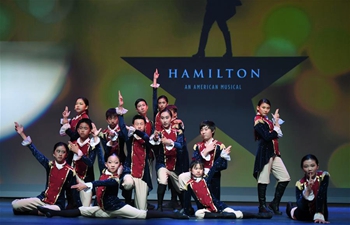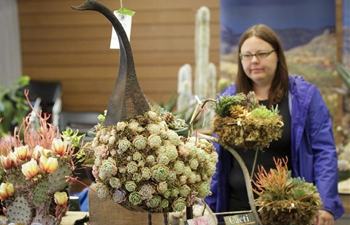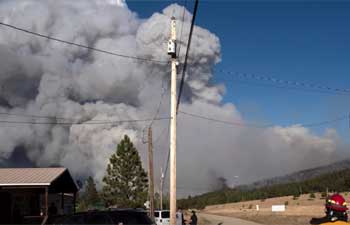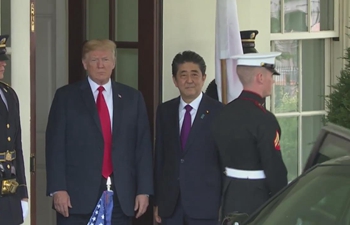By Xia Lin
NEW YORK, June 10 (Xinhua) -- Flushing Chinatown, one of the largest and fastest growing ethnic Chinese enclaves in the city, is constantly being renovated, roadside Chinese-style barbecue, the streets of graffiti and stalls on the sidewalk will be removed from its main roads.
Either through a public work like road expansion, or by community endeavors to safeguard law and order, BID, or the Downtown Flushing Transit Hub Business Improvement District, a community initiative to defend the inhabitants' bits and crumbs of interests, will explore ways and means to improve the business environment in the arguably largest Chinese-American community in New York City.
It has just concluded two panels to seek ways and common approval to upgrade sanitation and keep the avenues tidy and decent.
Meanwhile, two bills, Intro 969 and 970, were received around this weekend by the City Council to exclude roadside barbecue and stalls on the sidewalk in downtown Flushing.
Both efforts are being carried through by prominent Chinese Americans, who have rooted themselves in this specific locality in Flushing, Queens, and lived ever since with the rhythm of its daily life as well as its street-level sounds and smells.
FLUSHING FLOURISHES
The Flushing Chinatown is "one of the fastest-growing immigrant enclaves in the country," The New York Times (NYT) reported recently in its weekly Book Review.
"Flushing, for newcomers, is full of face-losing opportunities: They're constantly scolded - for jumping off a city bus before its stop, tipping too little, wearing the wrong shoes to driving class and lacking a credit history," it added.
Though a place where awkwardness pops up unexpectedly from any corner, like Chang described, the people living here never hesitate to transform it into a better accommodation and fancy destination, through persistent and even concurrent attempts and actions.
Since BID was kicked off in September 2003 by property owners, businesses, residents and community leaders who have a stake in downtown Flushing, 7,700 mails have been sent out to relevant parties to solicit understanding and support.
The vicinity it covers has been doubled and the whole plan is expected to be adopted and begin materialization in the autumn of 2019, under the auspices of the local government.
"The BID acts as advocate, liaison, promoter and problem solver for the community and provides a critical link between the NYC government and the neighborhood," said a BID publication.
On the other track of the self-promotion saga, Intro 969 and 970 target the peddlers on the community's newly expanded roads, where they erect stands to sell kitchen wares, bags, bedding, fruits, vegetables, mobile phone protectors and even socks and underwear.
Another point of the bills is something delicious but annoying. Roadside Chinese-style barbecue has been an increasingly popular attraction in Flushing, but the smoke it causes and the ensuing poisonous particles have drawn complaints about suffocation and coughing, together with the awareness of environment-friendly city councilors.
An inveteracy is hard to weed off, particularly when it is rooted in an ethnic's behavior pattern. Common sense, though, never stops to converge to consummate the essence.
People here like to hold fast to their principles (like their habitual alternating between street barbecue and elegant table service of classical Chinese food), but can also accept compromises and adapt to their environments, said NYT in its report.
"They're making it in America and America is making them," it added.
SURVIVE ON ITS OWN
Over the past five decades, the Chinatown in Flushing has blossomed into the fourth largest business district in the city. There are altogether three Chinatowns in Big Apple, with the other two respectively established in Brooklyn and Manhattan.
Around 2010, there were more than 33,000 Chinese ethnics in Flushing, making it the second largest among the trio. Eight years later, local community would like to rank it No. 1, as more people from China's northeastern part have resettled here, and increasingly mingled with the previous ones from China's southern part. They enjoy the life here in harmony with South Koreans, other Asians, Latinos, Africans and whites.
As the dominant demographic force, the Chinese ethics have shouldered ever more responsibility to make Flushing an easy-going enclave for the inhabitants across the whole spectrum to survive and prosper, and attract other New Yorkers and international travelers to share its food and culture.
The city government is happy to cooperate with the community to bring in more convenience and beautify its surroundings. Last year, parts of its main roads were successfully expanded by the Bill de Blasio administration, enabling more pedestrians to tour the region with ease and pleasure.
Despite occasional crimes and traffic accidents, the Chinatown in Flushing nonetheless emerges with ever more vigor. English-Mandarin classes, driving schools, nail saloons, dim sum palaces, fancy hotels and restaurants, Chinese and South Korean specialty supermarkets as well as immigration lawyers, all combine to enrich the variety of subcultures in the region.
With or without outside help, "the community is surviving on its own," said NYT.













